PAINTING: The first hour will be devoted to pictures that tell a story, either explicitly or by
implication. We will begin in the late Victorian era, the golden age of narrative painting, with the comparison below and
others. We will then go back to the renaissance and baroque and, if time, on to Picasso.



Some questions: What details can you see of food or drink in each picture? What is the setting of each? What kind of a boat? What kind of a journey? What social class are the principal figures? What is the relationship of the man and the women? Do both pictures require a story to explain them?
VIDEO: In the second hour, depending on time, we will compare a couple of music videos, and a pair of very short films. I am giving the words of the two songs at the texts link above; the videos are busy enough as it is without adding titles. I suggest you look at them in advance, especially if you are unfamiliar with the genre:
Katy Perry: The One that Got Away
The Killers: A Dustland Fairytale
PEOPLE: Here are brief bios of the artists we shall consider in the class, listed in order of birth. You can access all biographies via the BIOS link on the syllabus page.
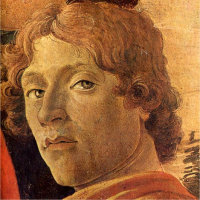 |
Sandro Botticelli, 1445–1510. Italian painter. Botticelli's work was neglected for centuries, but he is now acknowledged as the leading Florentine painter of the later quattrocento. Although he produced numerous religious paintings, he is best known for two large mythological works: Primavera (c.1480) and The Birth of Venus (c.1485). |
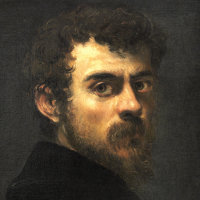 |
Jacopo Tintoretto, 1518–94. Venetian painter. With Titian, Tintoretto is the great Venetian master of the earlier 16th century, excelling in both religious and secular subjects. His paintings are generally darker than Titian's and rougher in touch, but he yields nothing in vigor or the scope of his imagination. |
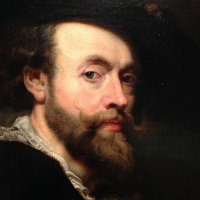 |
Peter Paul Rubens, 1577–1640. Flemish painter and diplomat. One of the giants of baroque art, Rubens developed the style of Titian into a powerful rhetoric applied equally to sacred and profane subjects, and exerted enormous influence in Spain, England, and France as well as in his native Flanders, continued in the work of his many pupils. He position at so many courts also made him invaluable as a diplomat. |
 |
Artemisia Gentileschi, 1593–1653. Italian painter. Trained by her father Orazio Gentileschi, Artemisia began producing work in her teens that outstripped his in dramatic power and psychological observation, especially in her protrayals of strong women. She was the first woman to be elected to the Florentine Academy and, at 23, one of its youngest members. |
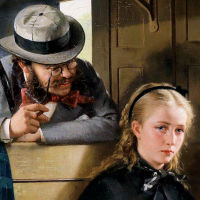 |
Berthold Woltze, 1829–96. German painter. Woltze specialized in painting scenes from contemporary life, often with an underlying story, as in The Annoying Gentleman (1874, detail at left; there is no picture of the artist available). |
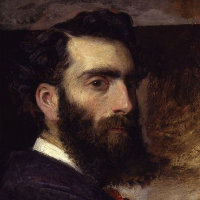 |
Philip Hermogenes Calderon, 1833–98. Franco-Spanish-English painter. Calderon was an English painter of French birth (mother) and Spanish (father) ancestry who initially worked in the Pre-Raphaelite style before moving towards historical genre. He was Keeper of the Royal Academy in London. [Wikipedia] |
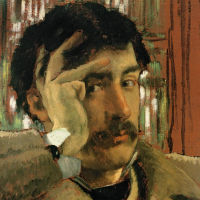 |
James Tissot, 1836–1902. French-born English painter. Tissot had a highly successful career as a society painter in Paris before he moved to London in 1871. His works, which now belong firmly in the history of British art, mostly depict affluent subjects in contemporary situations with a light narrative content. |
 |
John Collier, 1850–1934. English painter. Collier was a highly successful portraitist and painter of scenes from life, often with a "puzzle picture" element. He was connected through both his marriages to the family of Thomas Huxley, President of the Royal Society. |
 |
Ford Madox Brown, 1851–93. English painter. Although he was never a formal member of the Pre-Raphaelite Brotherhood, Ford shared their belief that art should be true to nature and morally edifying. His best-known works are The Last of England (1855) and the large street scene Work (1863). |
 |
Pablo Picasso, 1881–1973. Spanish-French painter and sculptor. A master in every field he touched, Picasso dominated the world of 20th-century art not only with his invention of Cubism (with Georges Braque), but also by his astonishing ability to reinvent himself and respond to changing events, as with his Guernica of 1937. |
ART: The paintings discussed (or intended to be discussed) in the first hour of class are below. For materials relevant to the second hour, click here.
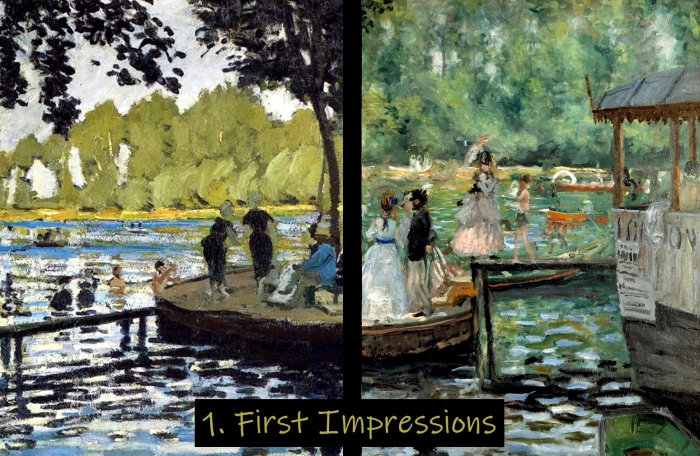
John Collier: The Sentence of Death (1908, Wolverhampton)
Some questions: What is the profession of the man on the left? What is the approximate age of each man? What might each be thinking?
Some facts: John Collier (1850–1934) was a specialist in what the late Victorians called "problem pictures." Works such as these were widely reproduced in papers and magazines, leading to fascinated debate on what the story was behind the picture. Not all such pictures were as explicitly titled as this.
COMPARISON 1



Some questions: Why not start with the details of food or drink in each picture? What is the setting of each? What kind of a boat? What kind of a journey? What is the function of the umbrellas in each case? What social class are the principal figures? What is the relationship of the man and the women? Do both pictures require a story to explain them?
Some facts: Ford Madox Brown painted The Last of England in response to the emigration of a close friend, Thomas Woolner, with his family to begin a new life in Australia; he was even thinking of going himself. The figures are not portraits of the Woolners', though, but were modeled by Brown and his wife. The picture is narrative in that it implies both a past and a future; the Tissot, by contrast, seems merely a picture of well-to-do people enjoying themselves in a pleasure launch on the Thames. Yet see further below.

James Tissot: Portsmouth Dockyard (1877, London Tate)
Some questions: Compare this very similar painting by Tissot from the following year. It is called Portsmouth Dockyard, yet it also has a subtitle: How Happy Would I Be With Either, a reference to a lyric from The Beggar's Opera about a man forced to choose between two women. What is different between the two pictures? Does your knowledge of the title for one affect how you now look at the other?
COMPARISON 2



Some questions: Assume that pictures like these tell the present part of a story that has a past, present, and future, how far into the past can you go with each? And how far, with any assurance, can you go into the future? What age is each of the women? What is her relationship to the man in the background? What is the implication of each setting? Can you guess a suitable title for each work?
Some facts: The Calderon painting is called Broken Vows and is the artist's most famous work. We are to assume that the man seen over the top of the fence is the woman's husband, flirting with the younger girl beyond. Woltze's title is Der lästige Kavalier (The Annoying Gent). The young girl is clearly traveling away from (or possibly to) a funeral, and in no mood for the guy's attentions. There is a fine article on these two paintings and many others on the wonderful website EclecticLight Co.; be sure to follow all the red links within the text.
COMPARISON 3



Some questions: Questions about these must be only partial, for those that do not know the story. Still, why did Botticelli choose such a wide format? Which figures are repeated, and how many times do they occur in each picture? What is the effect of closely-spaced trees? Why are they cut down in the last of the panels shown here? In this third panel, what is the attitude of the man in the red tights?
Some facts: As Boccaccio tells it in the Decameron, Nastagio degli'Onesti was a young gentleman of Ravenna in love with a lady whom he pursued in vain. One day in the pine grove near the sea, he came upon a horseman pursuing a naked woman with his hounds, then cutting her heart out and feeding it to his dogs. Asking for explanation, he is told that the two are condemned to repeat this ritual each week, he as a punishment for his suicide, and she for refusing his proposal and thus driving him to it. So Nastagio cuts a clearing in the forest, and invites the recalcitrant lady to a banquet the next week. Once she sees the consequences of refusing such an eligible young man, she changes her tune. You can read more about it on my former blog.
COMPARISON 4



Some questions: What stage in the story does each artist choose to represent? How does each treat the setting? And the elders? Which is the more compact composition, and how does that matter? Looking at each picture through the eyes of a male patron, does each affect you in the same way? And do any differences reflect the intent of each artist?
Some facts: The daughter of the painter Orazio Gentileschi, Artemisia became one of the leading artists of the Italian baroque regardless of gender, and the most significant female painter before the modern era. After being raped as a teenager by a colleague of her father's, and tortured to prove her innocence (her innocence!), she turned frequently to subjects of strong women such as Deborah and Jael taking revenge on men. It would be tempting to see this Susanna in the same light, but it is clearly dated 1610, when she would have been 15, and a year before the rape.

Artemisia Gentileschi: Judith and Holofernes (1615 and 1613)
COMPARISON 5



Some questions: The Rubens painting is an allegory, and most of the figures are taken from classical myth. Are there any that look like ordinary anonymous sufferers—or that work as ordinary human beings in addition to their mythological identity? How about in the Picasso (ignoring the huge differences in style)? Which picture implies movement more? Picasso's painting, as we know, was made in response to a specific event, the bombing of Guernica by German planes in April 1937; what features in it make it topical in terms of place and time?
Some facts: Rubens painted The Consequences of War in response to the Thirty Years' War (1618–48). As an offshoot of his function as court painter both in Spain and England, Rubens also served as a diplomat, and worked hard to bring the war to a conclusion—a goal, alas, not achieved in his lifetime. The Wikipedia article has more details on the painting, including an identification of the figures and symbols in it.
Picasso painted Guernica in a period of little over a month, for exhibition in the Spanish pavilion at the 1937 Paris World Fair. It then toured internationally to raise money for disaster relief. Held for a long time in the New York Museum of Modern Art, it returned to Spain in 1981.

Edgar Degas: Waiting (1882, Getty Museum)
Some questions: Degas painted or drew many depictions of dancers backstage, but only one of the two figures here is shown as a dancer. What about the other? Is she there purely for visual contrast, or does she have some connection to the other woman? Might some kind of narrative be implied by a title? And if so, how far do you think Degas intends you to take the story, as opposed to, say, the Calderon painting above?
VIDEOS: Links to the videos played in the second hour, together with some
relevant text documents:
Katy Perry: The One that Got Away
The Killers: A Dustland Fairytale
Charlotte Regan: Standby
Bram Schouw: Impasse
Texts of the two songs
Script for the second hour
PEOPLE: Here are brief bios of the artists considered in the class, in order of birth.
You can access all biographies via the BIOS link on the syllabus page.
 |
Sandro Botticelli, 1445–1510. Italian painter. Botticelli's work was neglected for centuries, but he is now acknowledged as the leading Florentine painter of the later quattrocento. Although he produced numerous religious paintings, he is best known for two large mythological works: Primavera (c.1480) and The Birth of Venus (c.1485). |
 |
Jacopo Tintoretto, 1518–94. Venetian painter. With Titian, Tintoretto is the great Venetian master of the earlier 16th century, excelling in both religious and secular subjects. His paintings are generally darker than Titian's and rougher in touch, but he yields nothing in vigor or the scope of his imagination. |
 |
Peter Paul Rubens, 1577–1640. Flemish painter and diplomat. One of the giants of baroque art, Rubens developed the style of Titian into a powerful rhetoric applied equally to sacred and profane subjects, and exerted enormous influence in Spain, England, and France as well as in his native Flanders, continued in the work of his many pupils. He position at so many courts also made him invaluable as a diplomat. |
 |
Artemisia Gentileschi, 1593–1653. Italian painter. Trained by her father Orazio Gentileschi, Artemisia began producing work in her teens that outstripped his in dramatic power and psychological observation, especially in her protrayals of strong women. She was the first woman to be elected to the Florentine Academy and, at 23, one of its youngest members. |
 |
Berthold Woltze, 1829–96. German painter. Woltze specialized in painting scenes from contemporary life, often with an underlying story, as in The Annoying Gentleman (1874, detail at left; there is no picture of the artist available). |
 |
Philip Hermogenes Calderon, 1833–98. Franco-Spanish-English painter. Calderon was an English painter of French birth (mother) and Spanish (father) ancestry who initially worked in the Pre-Raphaelite style before moving towards historical genre. He was Keeper of the Royal Academy in London. [Wikipedia] |
 |
James Tissot, 1836–1902. French-born English painter. Tissot had a highly successful career as a society painter in Paris before he moved to London in 1871. His works, which now belong firmly in the history of British art, mostly depict affluent subjects in contemporary situations with a light narrative content. |
 |
John Collier, 1850–1934. English painter. Collier was a highly successful portraitist and painter of scenes from life, often with a "puzzle picture" element. He was connected through both his marriages to the family of Thomas Huxley, President of the Royal Society. |
 |
Ford Madox Brown, 1851–93. English painter. Although he was never a formal member of the Pre-Raphaelite Brotherhood, Ford shared their belief that art should be true to nature and morally edifying. His best-known works are The Last of England (1855) and the large street scene Work (1863). |
 |
Pablo Picasso, 1881–1973. Spanish-French painter and sculptor. A master in every field he touched, Picasso dominated the world of 20th-century art not only with his invention of Cubism (with Georges Braque), but also by his astonishing ability to reinvent himself and respond to changing events, as with his Guernica of 1937. |
